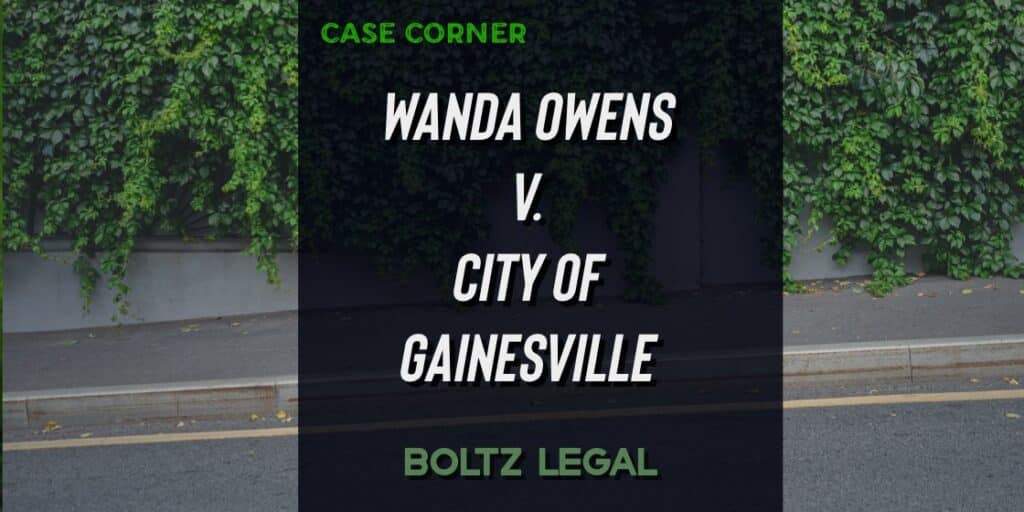Wanda Owens v. City of Gainesville
Eighth Judicial Circuit Court, Alachua County, Florida
Case No. 01-23-CA-2260
Opinion Filed: November 12, 2024
Judge: Gloria R. Walker
Torts – Premises Liability – Trip and Fall – Open and Obvious Doctrine – Municipal Immunity
The Circuit Court for the Eighth Judicial Circuit granted summary judgment in favor of the City of Gainesville, holding that a minor height difference between two sidewalk panels was open and obvious, and therefore not a dangerous condition as a matter of law.
Background of the Case
- The Trip-and-Fall Incident
- Plaintiff Wanda Owens filed a negligence suit against the City of Gainesville following a trip-and-fall incident on a city sidewalk.
- Owens alleged that the uneven pavement caused her fall and injuries.
- Photographic evidence submitted to the court showed a small height differential between two adjacent sidewalk slabs.
- The City Moves for Summary Judgment
- The City of Gainesville argued that the sidewalk elevation change was minor and clearly visible.
- It asserted that the condition was not legally dangerous and fell within the “open and obvious” doctrine.
- Defendant contended it owed no duty to warn or remedy the condition because it was not inherently hazardous.
Court’s Legal Analysis and Ruling
- Summary Judgment Standard
Under Florida Rule of Civil Procedure 1.510(a):
“The Court shall grant summary judgment if the movant shows that there is no genuine dispute as to any material fact and the movant is entitled to judgment as a matter of law.”
2. The Sidewalk Condition Was Open and Obvious
- The court found the height disparity to be minimal and plainly visible to pedestrians.
- Citing cases such as Durrah v. Bowling Breen Inn of Pensacola, LLC and Kelley v. Sun Communities, Inc., the court ruled that minor sidewalk imperfections are not actionable when open and obvious.
- No Duty Breached by the City
- Judge Gloria R. Walker determined that the City did not breach any duty to Plaintiff because the sidewalk condition was not inherently dangerous.
- The defect was found to be common, expected, and not concealed in a way that would prevent an ordinary person from avoiding it through reasonable care.
Final Judgment
The Court issued the following:
– The City of Gainesville’s Motion for Summary Judgment is GRANTED.
– Final Judgment is entered in favor of the Defendant.
– Plaintiff Wanda Owens shall take nothing by this action.
– The Defendant shall go hence without day.
Key Takeaways: Open and Obvious Conditions and Municipal Liability
- Cities are not automatically liable for every trip-and-fall on public sidewalks.
- To be actionable, a sidewalk condition must present an unreasonable risk of harm that is not open and obvious.
- Minor elevation changes between sidewalk panels are generally not considered dangerous as a matter of law.
- The “open and obvious” doctrine remains a strong defense against premises liability claims involving everyday walking surfaces.
Todays Insight
“Justice consists not in being neutral between right and wrong, but in finding out the right and upholding it, wherever found, against the wrong.”

